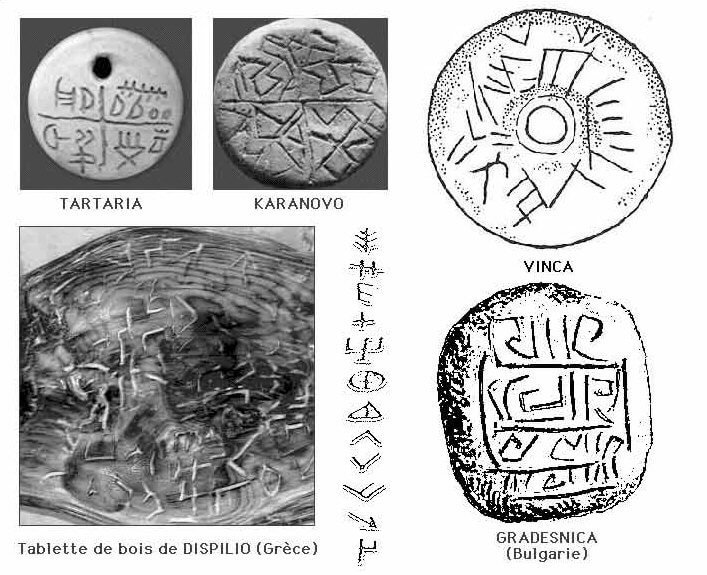The Vinča script, often mentioned in discussions about the origins of writing, represents a fascinating and enigmatic chapter in the history of human communication. This article aims to explore the Vinča script in depth, examining its history, characteristics, and the ongoing debate over its status as potentially one of the oldest forms of writing.
Historical Context
The Vinča culture, named after a village near Belgrade where significant artifacts were first discovered, thrived in the Balkans, particularly in present-day Serbia, Romania, Bulgaria, and Greece, during the Neolithic era, around 5500 to 4500 BCE. Significant advancements in agriculture, the domestication of animals, and increasingly sophisticated pottery and tool-making techniques all occurred during this time.
Discovery of the Vinča Symbols
The Vinča symbols were first uncovered in the early 20th century. These symbols, inscribed on pottery, figurines, and other clay artifacts, immediately attracted the attention of archaeologists and historians. Their linear, abstract style differed significantly from the pictorial representations seen in contemporary art forms.
Characteristics of the Vinča Script
The symbols consist of various linear and angular marks, some of which appear to be organized in repetitive patterns. The collection includes simple geometric shapes, lines, swirls, and more complex forms that some suggest resemble letters or ideograms.
Debate Over Its Status as Writing
The central debate about the Vinča symbols revolves around whether they constitute a form of writing. If proven to be a true script, the Vinča symbols could predate the earliest known Mesopotamian cuneiform script and Egyptian hieroglyphs, traditionally considered the origins of writing around 3200 BCE.
Arguments for Its Status as Writing
1. Systematic Nature: Proponents argue that the repetitive and systematic nature of the symbols suggests they were used for communication.
2. Wide Geographic Spread: The symbols are found over a broad geographic area, indicating a shared system of symbols across the Vinča culture.
3. Complexity and Consistency: The complexity and consistency of the symbols across different artifacts suggest a degree of sophistication that might indicate a form of writing.
Counterarguments
1. Lack of Contextual Evidence: Critics point out the lack of contextual evidence, such as the symbols being used in different mediums or contexts that unequivocally suggest record-keeping or narrative functions.
2. No Decipherment: Despite numerous attempts, no one has successfully deciphered the Vinča symbols, casting doubt on whether they represent a language.
3. Symbolic or Ritualistic Purpose: Some argue that these symbols might have served a symbolic or ritualistic purpose rather than constituting a form of writing.
Comparison with Other Prehistoric Scripts
The debate about the Vinča script often involves comparisons with other prehistoric scripts such as the Tartaria tablets, the Dispilio Tablet from Greece, and the Jiahu symbols from China. These artifacts also feature undeciphered symbols and have sparked similar debates about the origins of writing.
Current Scholarly Consensus
The current scholarly consensus leans towards a cautious approach. While acknowledging the importance and intrigue of the Vinča symbols, most experts stop short of declaring them a bona fide writing system. The absence of a clear linguistic structure and the lack of decipherment are significant hurdles in classifying these symbols as a form of writing.
In conclusion, while the Vinča script remains a subject of fascination and mystery, the claim that it is the oldest form of writing is still a matter of debate. Its significance, however, in understanding the cognitive and cultural developments of the Neolithic Balkans remains undiminished. As archaeological techniques evolve and new discoveries emerge, the mystery of the Vinča script continues to captivate historians, archaeologists, and linguists alike, offering a tantalizing glimpse into the dawn of human civilization.









